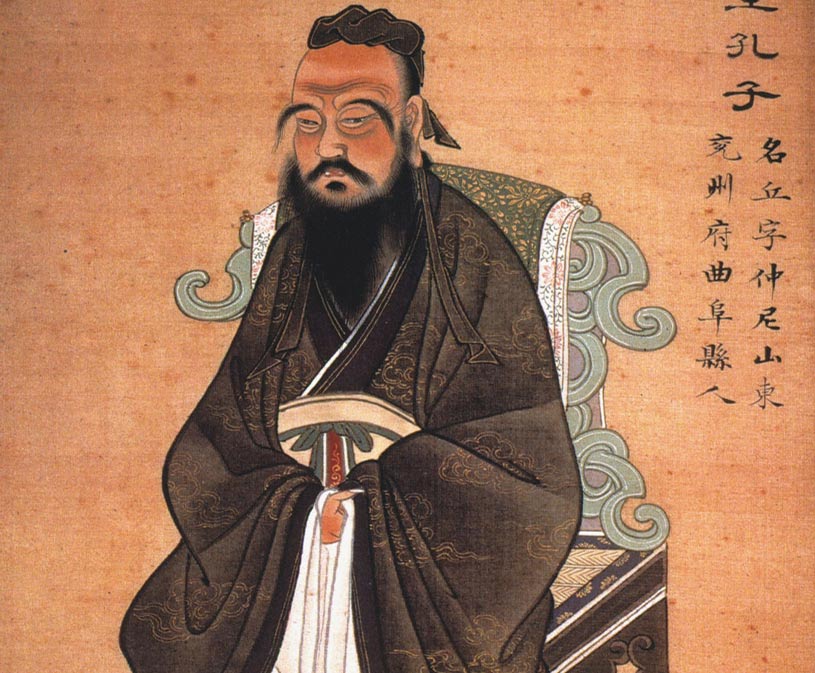One of the Oldest Known Paintings of Confucius found in Tomb of Disgraced Ex-Emperor
There may be some irony in the discovery of a possible painting of Confucius, known for espousing high-minded morals and the importance of good governance – it was found in the tomb of an ancient Chinese emperor dethroned after just 27 days for loose morals and bad performance.
The painting, on a broken lacquer screen that archaeologists recently pieced back together, was discovered in the tomb of Liu He, the grandson of Emperor Wu. If the painting does depict the ancient philosopher and founder of Confucianism, it is the oldest known portrait of him, says Xinhuanet.com.
Wu is considered one of China’s greatest leaders of antiquity, ruling his realm during a prosperous era. But Liu He, who succeeded Wu, quickly proved he was unworthy of the exalted title and office of emperor, and the royal clan dethroned him.
One site says Liu He committed 1,127 acts of misconduct, though it did not specify what they were. Another site says “he was known for his inclination to pleasures already as a prince,” a situation that become intolerable when he become emperor. Though he was considered mad and was examined from time to time by officials, they made him the marquis of Haihun anyway.
His tomb is at the cemetery at Haihunhou in Jiangxi Province. “Haihunhou” mean Marquis of Haihun, the title Liu He was given after he was forced out. The tomb is believed to be more than 2,000 years old.
The cemetery is so important that Chinese officials are directing subordinates to apply to the United Nations for World Heritage site status with UNESCO. Archaeologists think the site may have been the capital of the Haihun Kingdom, a small realm in the north of Jiangxi
The cemetery measures about 40,000 square meters (about 10 acres) and includes eight tombs. Its walls run for about 900 meters (3,250 feet). The cemetery includes the tomb of Haihunhou’s wife, affiliated memorial temples and drainage systems and roads.

In the Analects of Confucius, the ancient philosopher’s teachings were recorded. This excerpt is of an unknown date and was found in the Mogao Caves in Dunhuang, China. (Wikimedia Commons)
When Liu He died, insane, five years after his family forced him out, that didn’t stop them from giving him a fantastic burial with grave goods that included gold and silver items, 10 tons of bronze coins, musical instruments, chariots, sacrificed horses among other things.
In addition to the Wuzhu bronze coins and the chariots, the team has found more than 10,000 other gold, bronze and iron items, wooden tablets, bamboo slips and jade articles, Xin Lixiang of the China National Museum said. He is leading the excavation.
The team has discovered several musical instruments including chimes, an instrument with 25 strings called a se, pan flutes and a sheng or a reed-pipe wind instrument. They have also found terracotta figurines that depict how to play the instruments.
Now they have found the painting on the lacquer screen, which measures 50 to 60 centimeters wide (20 to 23.5 inches) by 70 to 80 cm tall (27.5 to 31.5 inches). Such screens were used in Chinese homes to give privacy and block winds and evil spirits, says archaeologist Zhong Zhangli, deputy director of excavations in Jiangxi who is leading the dig at Haihunhou cemetery. He told Xinhua.net:
"The Chinese characters on the screen include the names of Confucius, his father, Shu Lianghe, and one of his favorite disciples, Yan Hui. These names are evidence that at least one of the two men painted on the screen is Confucius himself. We assume the tomb owner respected Confucius and had a Confucius portrait painted on the screen. After he died, his family buried his favorite screen with him, even though such screens were not conventional burial items in Chinese funerary customs."
If the portrait does depict Confucius, it may indicate that the ancient sage’s teachings were prevalent among the rulers of the Western Han Dynasty, Zhang told Xinhuanet.com. The dynasty lasted from 206 BC to 24 AD.
Confucius is reported saying in the Analects, a collection of his wisdom, about government and leadership: “If your desire is for good, the people will be good. The moral character of the ruler is the wind; the moral character of those beneath him is the grass. When the wind blows, the grass bends” He also said:
“In ruling a state of a thousand chariots, one is reverent in the handling of affairs and shows himself to be trustworthy. One is economical in expenditures, loves the people, and uses them only at the proper season.”
If the rulers of the Western Han Dynasty truly did follow Confucius, perhaps they judged Liu He under Confucian principles, found him lacking and therefore removed him.
Featured image: This painting of around 1770 AD shows Confucius but is probably of finer quality than the one recently found in the tomb of the Marquis of Haihun. (Wikimedia Commons)
By: Mark Miller



















